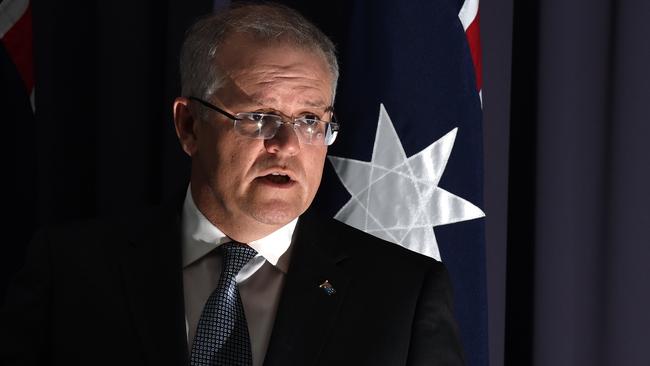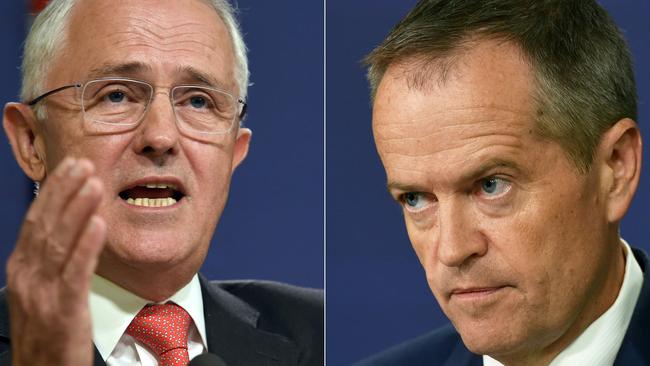Federal Budget 2016: What we are likely to see
TREASURER Scott Morrison’s first Budget must also become the launching pad for the Government’s election plan at a time when the Coalition is behind in every poll.
Budget 2016
Don't miss out on the headlines from Budget 2016. Followed categories will be added to My News.
IN A corner of Parliament House’s Senate courtyard, there is a glorious red maple oak that’s well-known to Budget-watchers in Canberra.
Dubbed the “Budget tree”, its leaves have usually transformed into a spectacular flame in time for the Government’s annual fiscal statement delivered in autumn, providing a stunning backdrop to Budget night TV coverage.
But thanks to a combination of a late hot summer and an early Budget, the tree’s leaves have only just started to turn.
BUDGET: Tax the rich, Greens say
Their full brilliance is still some way off.
As he prepares to hand down his first Budget on Tuesday night, Treasurer Scott Morrison will be hoping the duller than usual Budget tree is not an omen.
The fortune of a government – and the key players in it – can rise or fall on a Budget. Just ask Tony Abbott and Joe Hockey.
Their unpopular first Budget in 2014 sparked a backlash among voters that haunted the Abbott government until its abrupt end with the leadership change last year.
There is even more riding on this Budget for Malcolm Turnbull and his Treasurer, who still have to spell out an overarching plan for the country.
With a July 2 double dissolution looming, Morrison’s first Budget must also become the launching pad for the Government’s election plan at a time when the Coalition is behind in every published poll. Part manifesto and part economic master plan, the Budget needs to give nervous Liberal and National MPs a clear message to sell to the public.
Morrison has already made it clear he wants the focus to be on “jobs and growth” – a three-word slogan that will be on high rotation over the coming weeks. Another theme will be “living within our means” – an attempt to turn the necessary spending restraint into a virtue among voters who have become accustomed to pre-election handouts. And then there’s “fairness”, a crucial element to try to offset Labor’s attacks that the Government is favouring the rich.
But these themes will be meaningless unless Morrison can provide some substance behind them.
So far, the signs have not been encouraging. After raising expectations about tax reforms that would deliver an economic boost, Turnbull and Morrison embarked on months of conflicting hints about how much they would change.
We will finally see the Government’s tax vision on Tuesday night. But there is little room left to move.
The so-called “tax-mix switch”, where the GST would be hiked and the extra funds used to pay for big income tax cuts, has been ruled out.

The “excesses” of negative gearing that Morrison once warned about have turned into mere “enthusiasms” in the Treasurer’s language.
Instead, concessions for property investors will not be touched in the Budget, so the Government can draw a clear distinction with Labor’s plans that the Coalition says will drive down property prices.
The tax increases the Government is likely to impose, through a hit to high earners’ superannuation concessions and tobacco excise, are similar to other Labor plans and therefore unlikely to risk scaring away voters.
Morrison’s real challenge will be in explaining the other components of tax changes that he says will drive growth and create jobs.
These could include future company tax cuts and new tax incentives for employers. But these may be a tough sell to voters if there is little for the average wage earner.
There have been hints of modest income tax changes aimed at middle income earners on about $80,000 but the Government simply cannot afford the wide-scale reversal of bracket creep that Morrison once set as a priority.
Any tax increases will be offset with other cuts, as will new spending.
The Government will make greater use of measures such as Turnbull’s “cities plan” which promises better road and rail networks funded through innovative financing models such as bonds in place of grants to states.
That’s not a bad idea given the current era of record-low interest rates but it risks undermining the Government’s recent aversion to debt.
Other Budget measures, from welfare to education, will be sold as incentives to invest and work harder.
“We’re keen to back those who go out there and back themselves in this economy,” Morrison says.
The Treasurer’s task has been made more difficult because of a transitioning economy that continues to be rocked by the slowdown in China and patchy conditions across the globe.
Government coffers have been hit by lower company tax receipts and low wage growth has held back income tax revenue. A boost from higher iron ore prices has been offset by negatives for the broader economy, including a strengthening Aussie dollar.
Lower than expected inflation has now raised the prospect of an official interest rate cut on Budget day – a decision that would cast a new light over Morrison’s message.
Respected Budget forecaster Chris Richardson from Deloitte Access Economics is predicting deficits totalling $129 billion over four years, which is $21 billion worse than forecast in December’s midyear update.
Ratings agency Moody’s has even raised the prospect of a cut to Australia’s AAA credit rating if spending cuts are limited – a move that would be a disaster for a government heading into an election campaign. All of this adds up to an even tougher task for Morrison on Tuesday.
He has to show he can address concerns about debt and deficit while delivering measures to revive growth.
He also needs something with which to wow voters.
But, like the Budget tree’s colour, we are yet to see it.
Don’t miss The Courier-Mail’s 16-page Budget wrap on Wednesday
Originally published as Federal Budget 2016: What we are likely to see


